|
Somewhere in Time,
Unlimited "Four Seasons of Fashions"
|
|
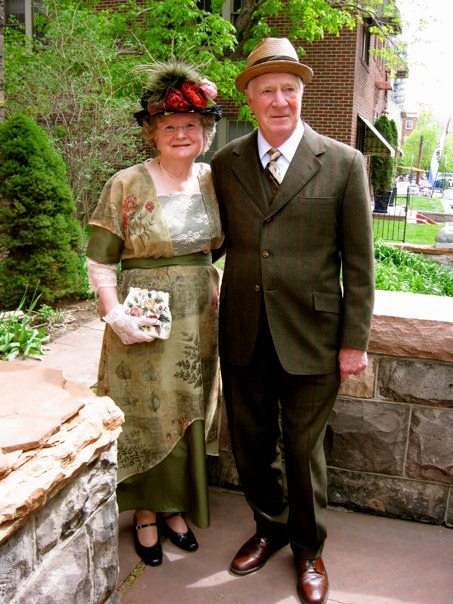 |
Miss Julie and Mr. Terry have been long time historical
costumers and collectors of historical clothing. On this day, they shared a glimpse into this collection with the members of Somewhere in Time, Unlimited. Many members were fortunate enough to make In the collection, one can view |

In this image above, one can easily The following descriptions of the garments |
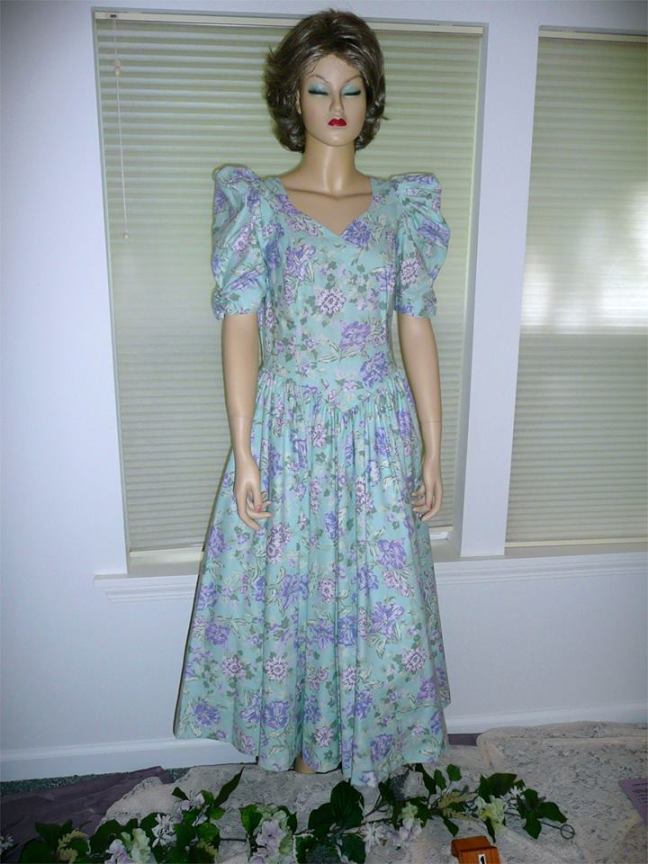 |
 |

A gossamer 1980's ball gown is the color
|
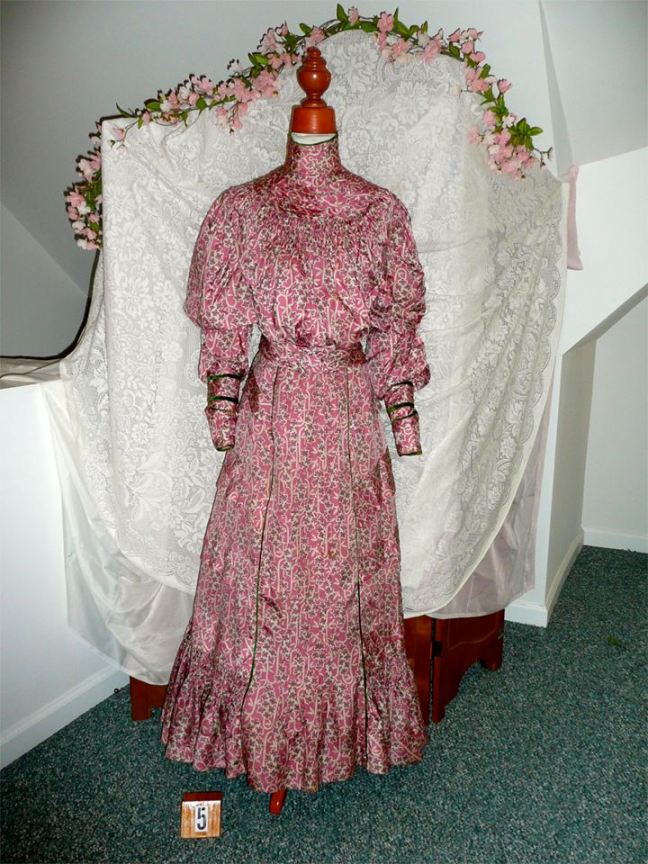 |
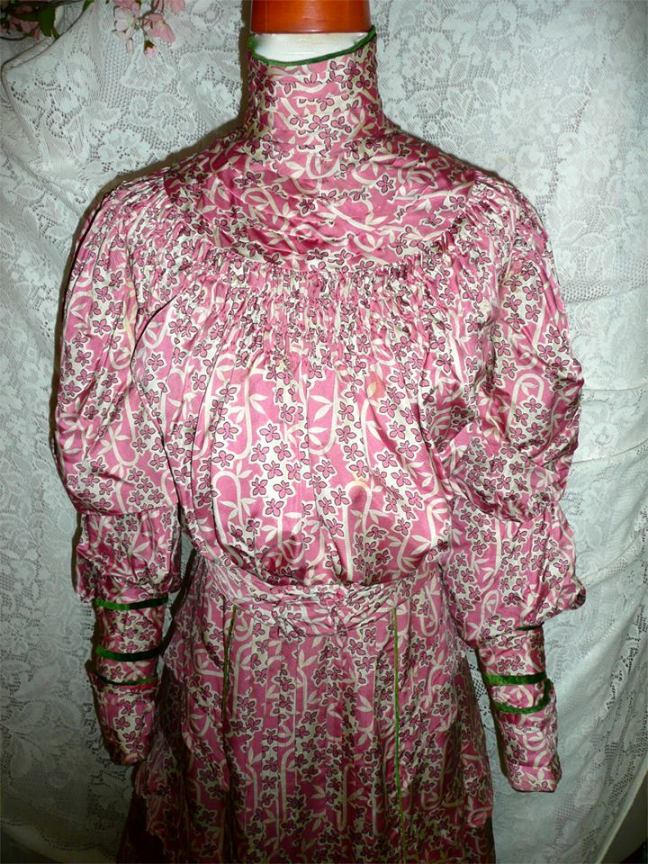 |
|
A circa 1901-1904 afternoon gown is made from a pink and white
silk floral print trimmed with green velvet ribbon. The skirt has flat pleats in front, chevron pleats on sides, and back and a flounce at the skirt bottom. The bodice features a high neck, tucked yoke with smocking, and a typical "pigeon front" silhouette of the period. The sleeves are full to the mid-forearm with long tight cuffs. |
|
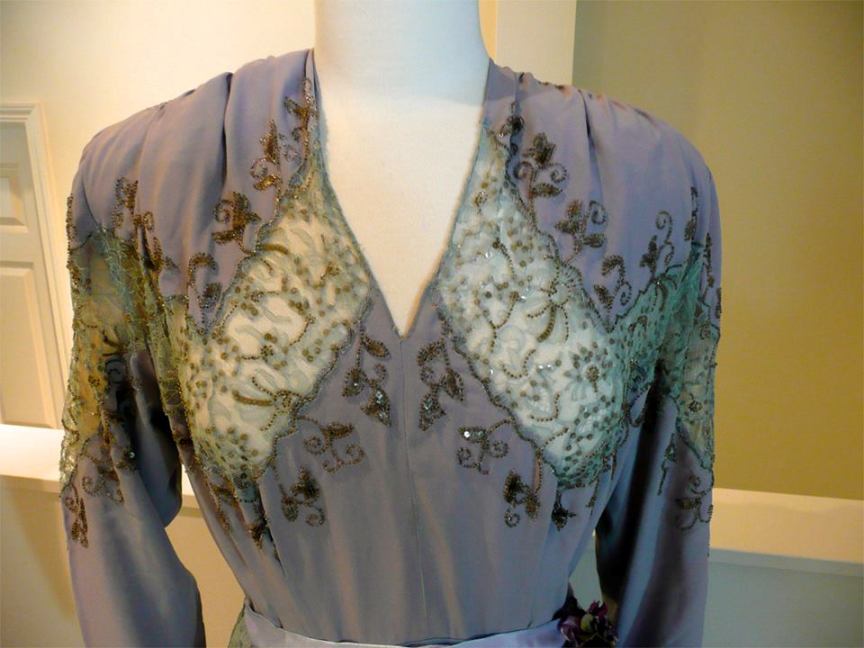
An early 1940's evening gown for a The bodice is styled with a V neck, |
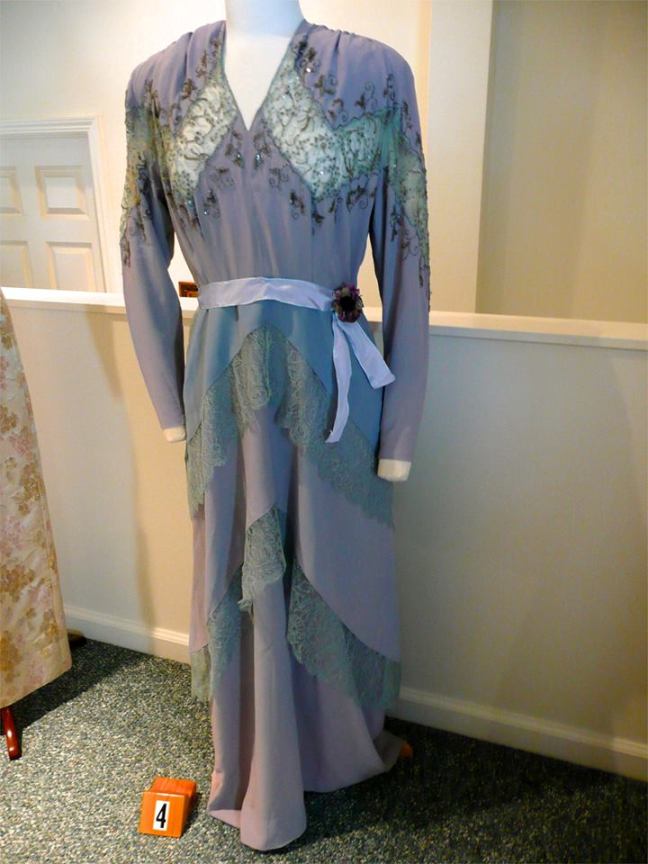 |
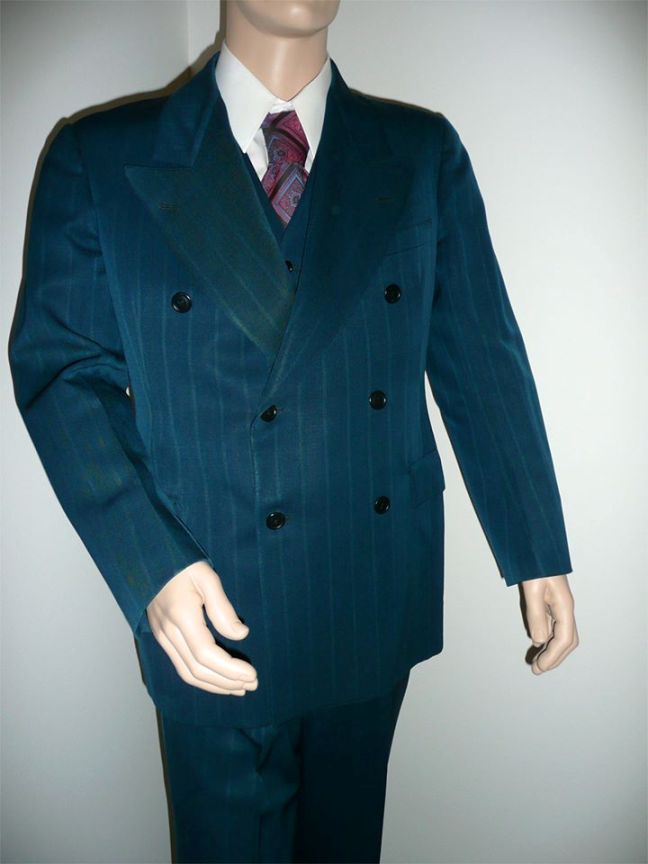 |
A teal pinstripe wool three-piece suit is dated July 1940. It retains the trim, |
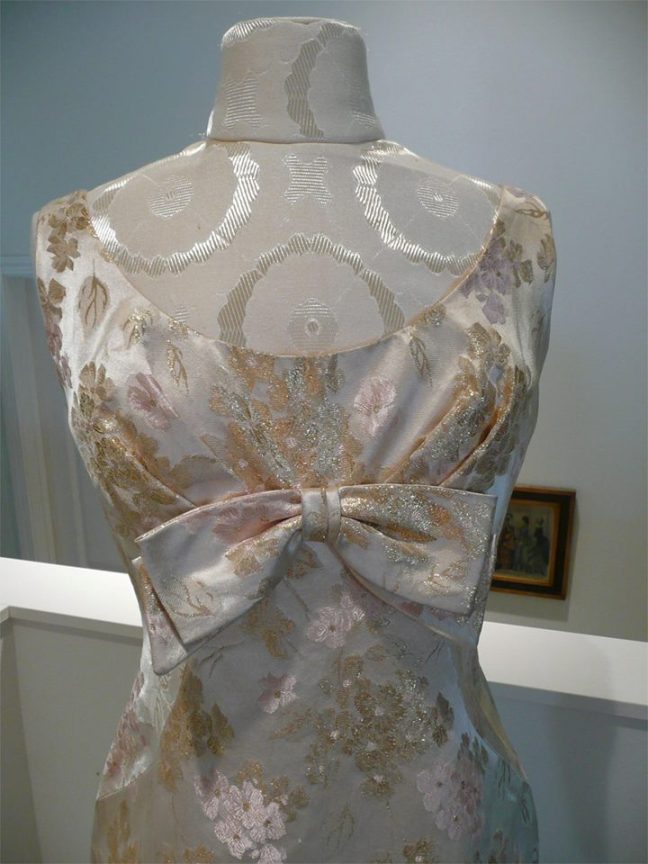 |
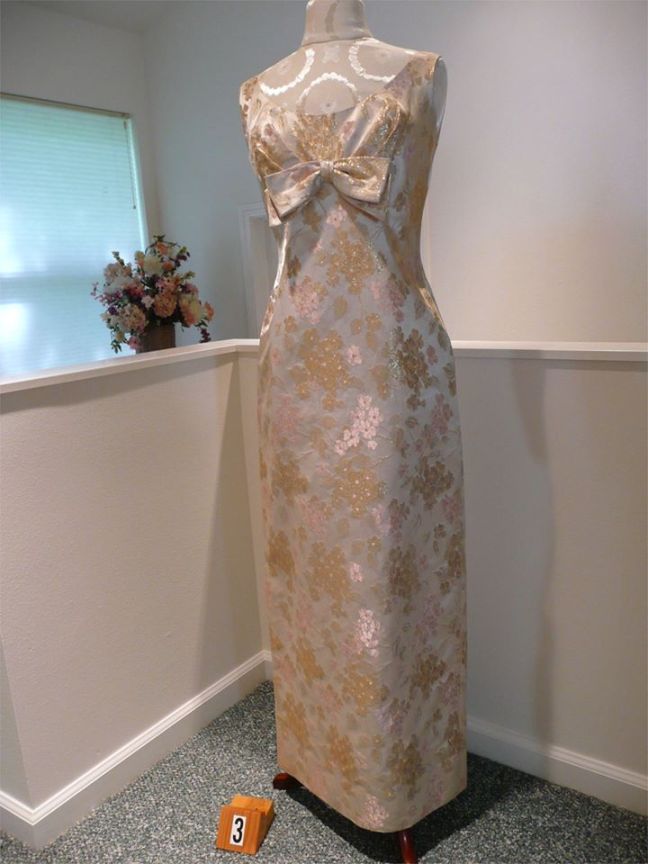 |
|
A circa 1960-62 slim sheath formal gown is similar to the styles Jackie Kennedy favored. It's made in a beautiful cherry blossom acetate, silk brocade in pale pink and gold. The sleeveless, scoop neck bodice with bust pleats has a wide bow at the Empire height. |
|
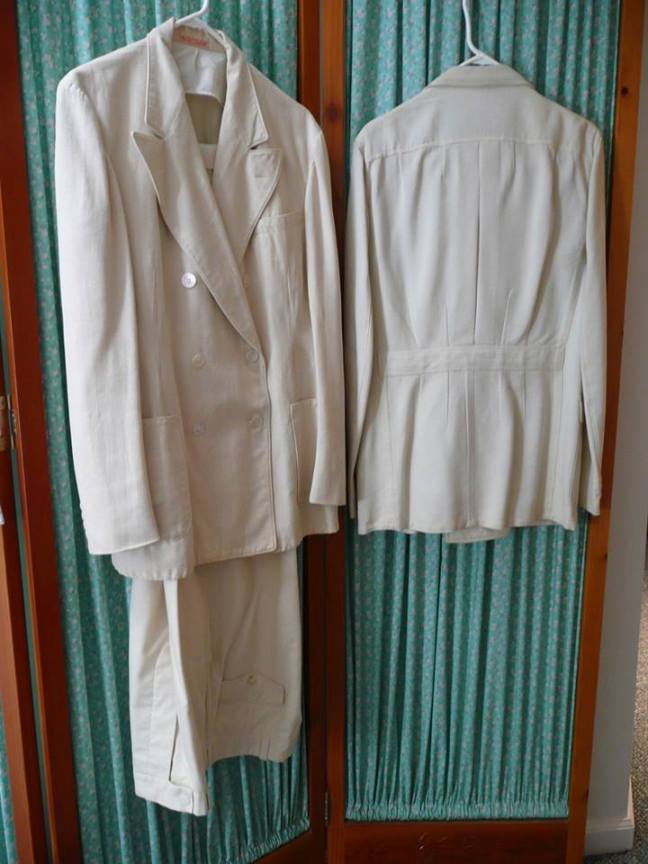 |
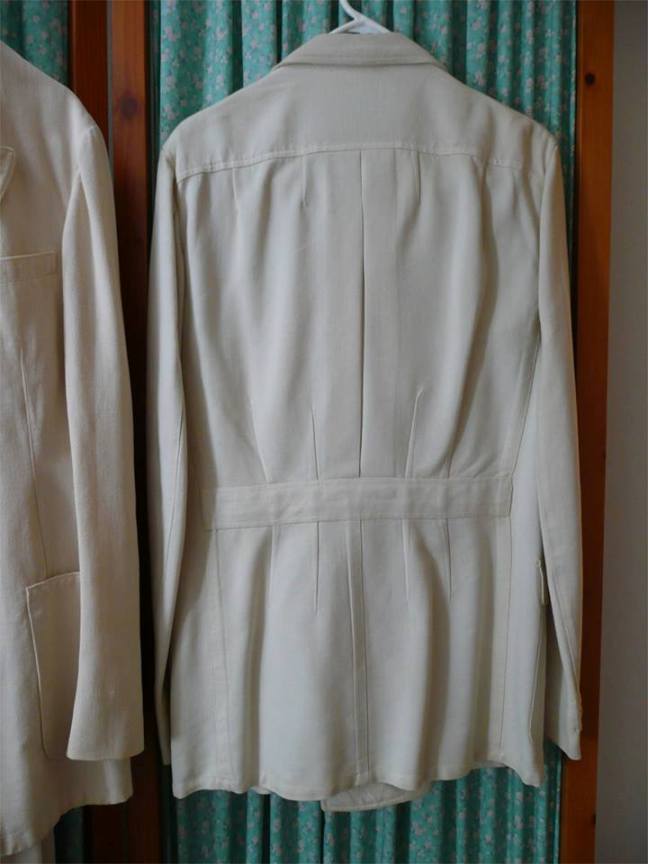 |
|
The summer section of the display began with a Palm Beach label,
white linen suit, the standard for elegance for the fashionable gentleman from the 1890's to the 1930's. The most typical "sporty" summer suit of this label has a stitched-in back belt and pleats. |
|
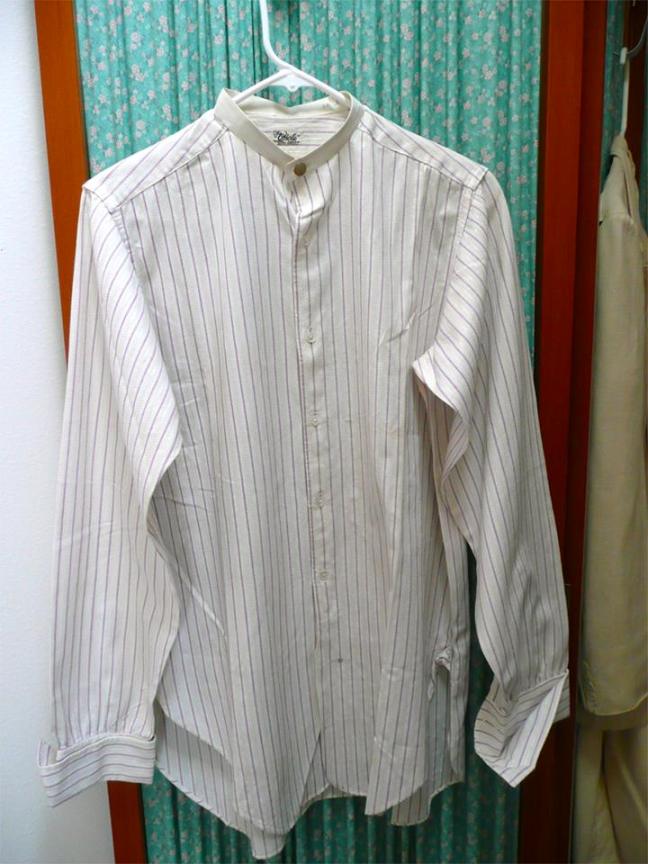 |
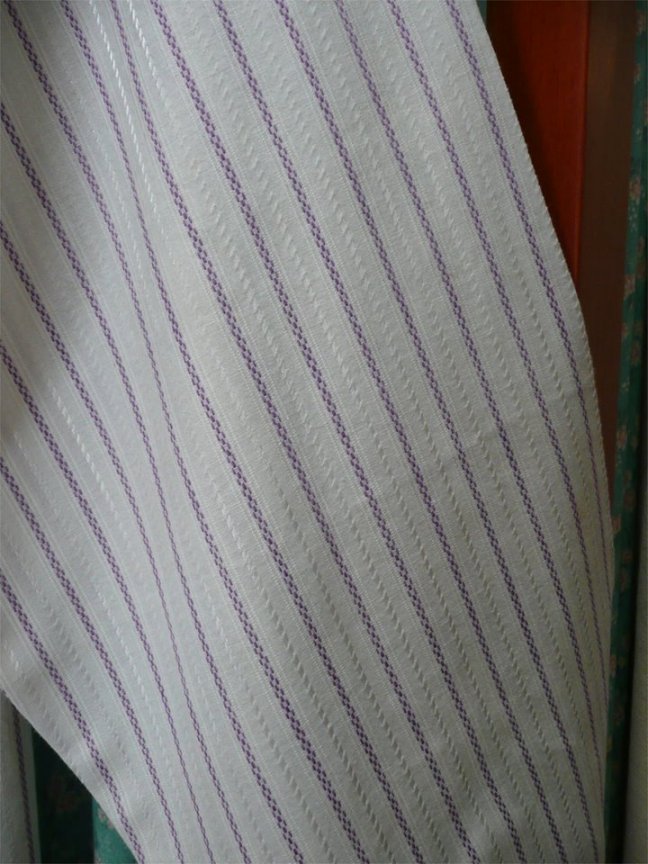 |
|
An 1890's-1910's "casual" summer shirt has a narrow band for attaching a stiff collar and requires cuff links. This is
an example of the beautiful cotton shirting weaves available. |
|
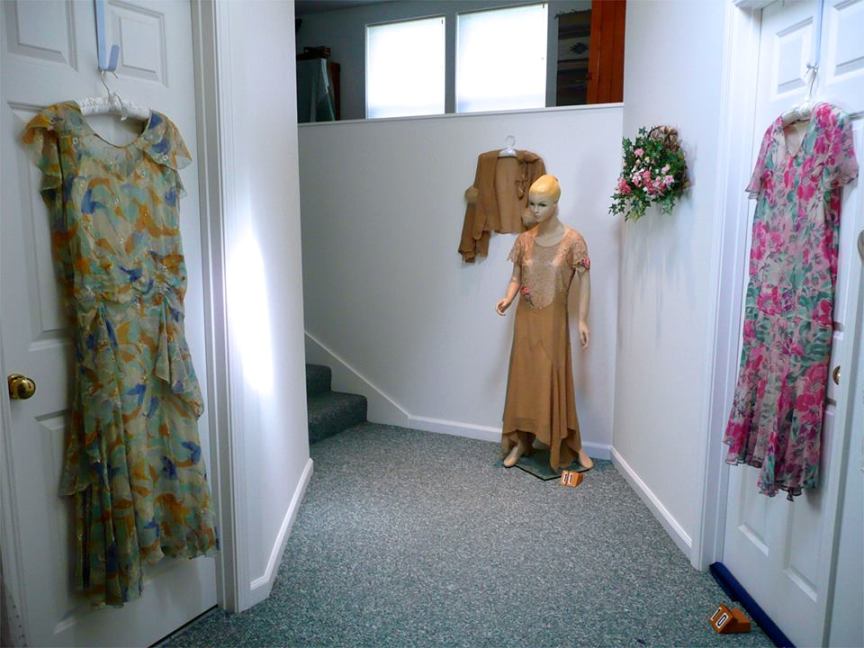 Part of the Summer section of the exhibit. A mis-1920's lined silk chiffon afternoon dress Close-up shows the lovely pink and teal |
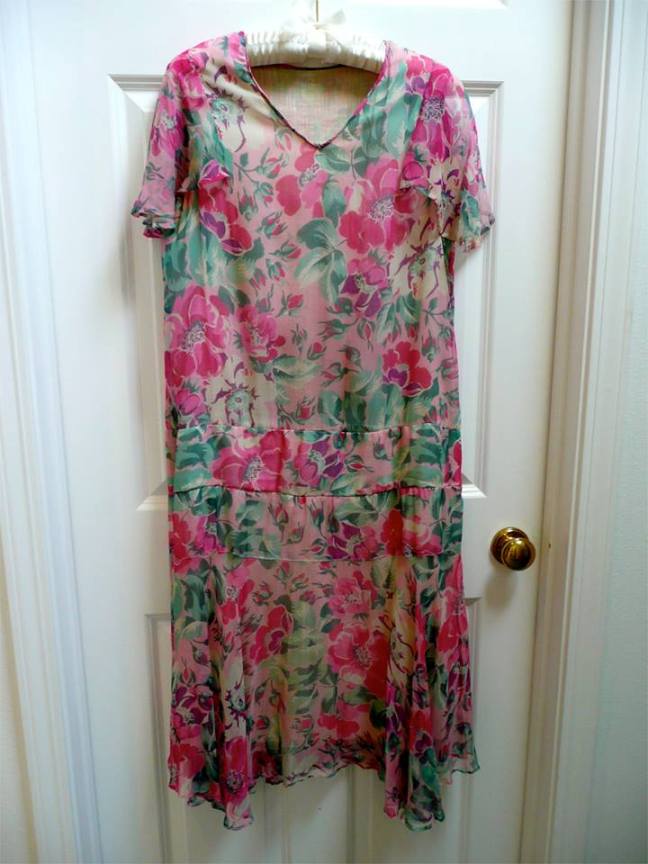 |
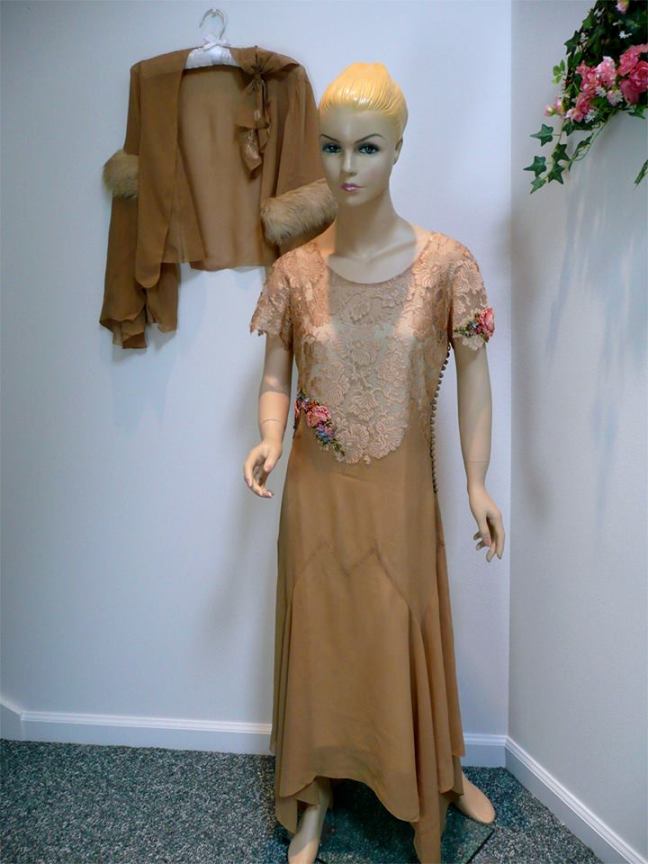 |
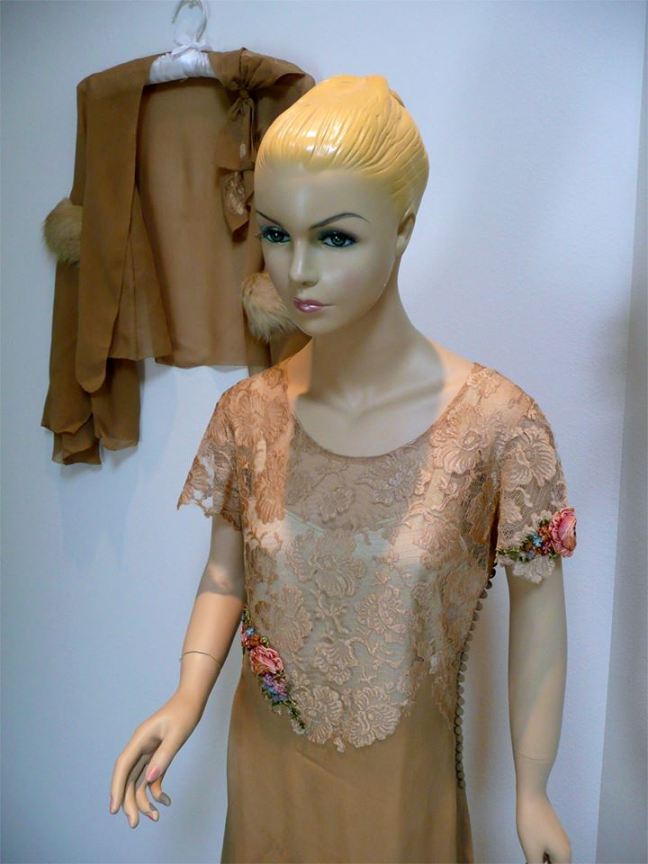 |
|
Circa 1928-29 taupe silk evening ensemble has a lace bodice, a
gusseted skirt with uneven hemline, and a coordinating cover-up jacket with flared, fur-trimmed sleeves. Close-up shows the exquisite multi-colored ribbon work flowers and fabric covered buttons. |
|
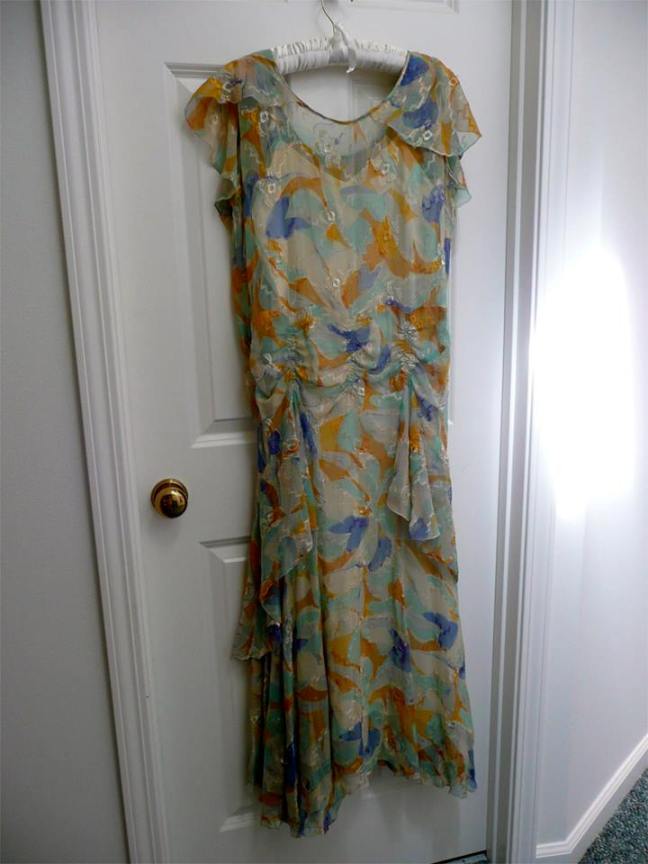 |
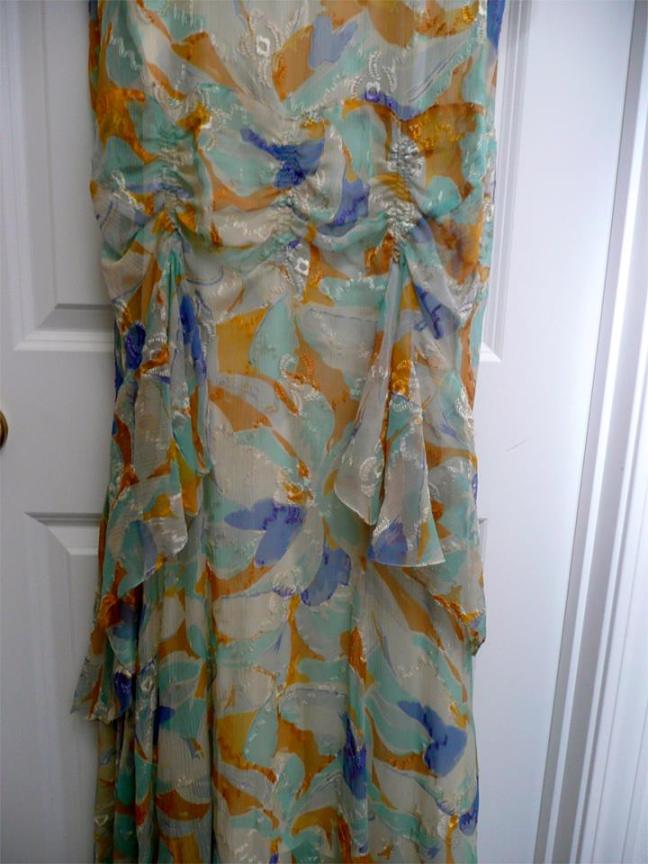 |
|
Circa 1930-31 floor length evening gown of silk chiffon in a summery blue, aqua and gold. The gown features shirring at the hips with draped ruffles. |
|
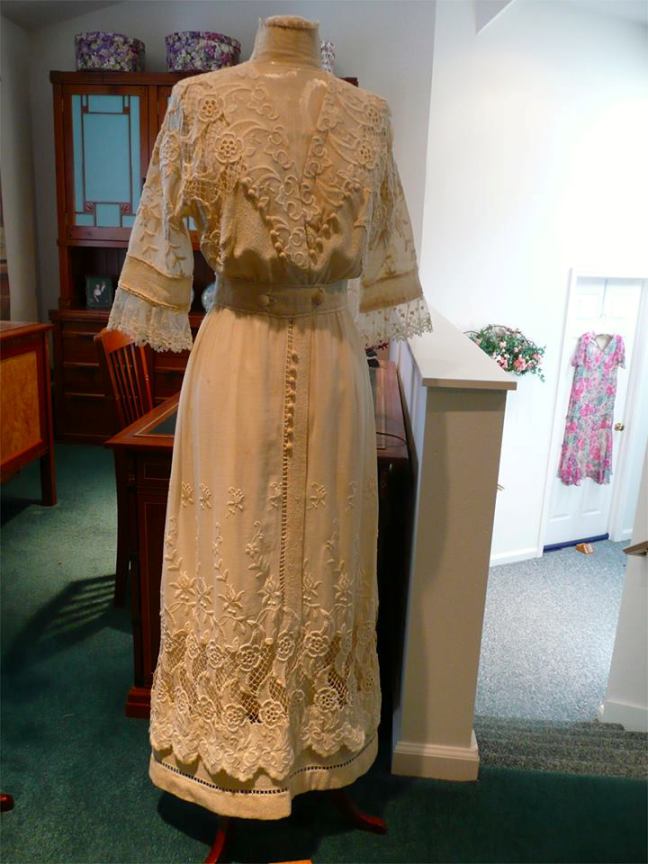
This ivory batiste, linen and silk lace summer |
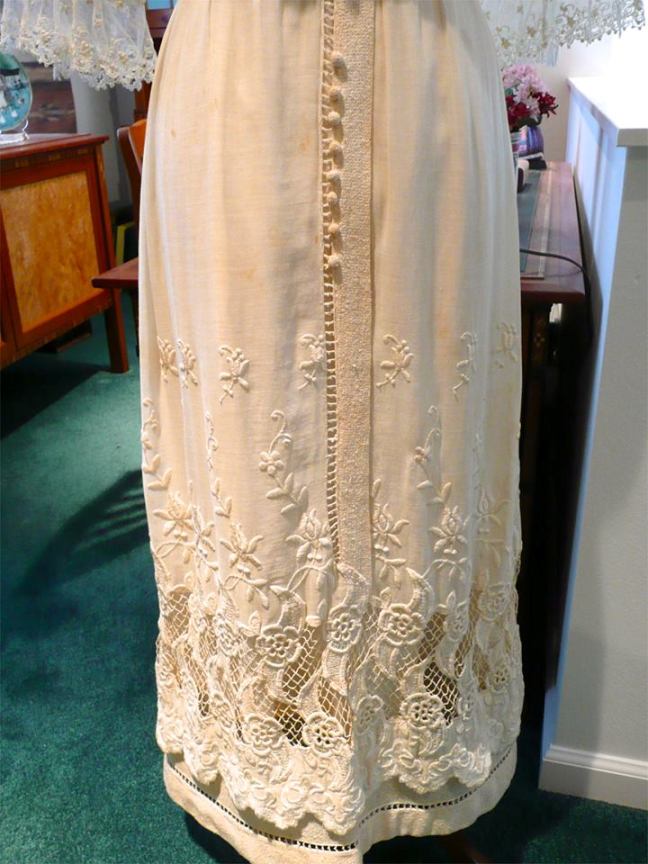
The softly fitted bodice has a v-neck filled in with |
|
This garment came with a typed note: "Grandmother's home made 1912 wedding dress" and was the overall favorite dress in the exhibit. |
|
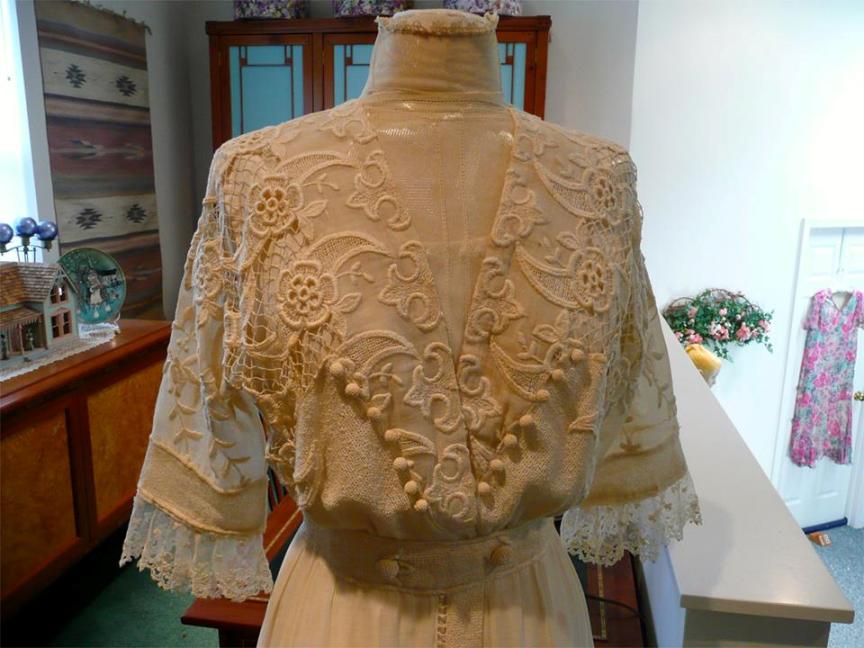 |
|
|
The skirt follows the newly fashionable tubular shape that
became popular in 1910-12. The bottom is especially interesting. The bottom is especially interesting. Double layer skirts did not come into fashion until 1913-14. This one appears to have two layers, but it is an illusion - the top layer is sewn to the bottom, which is just a short panel underneath. |
|
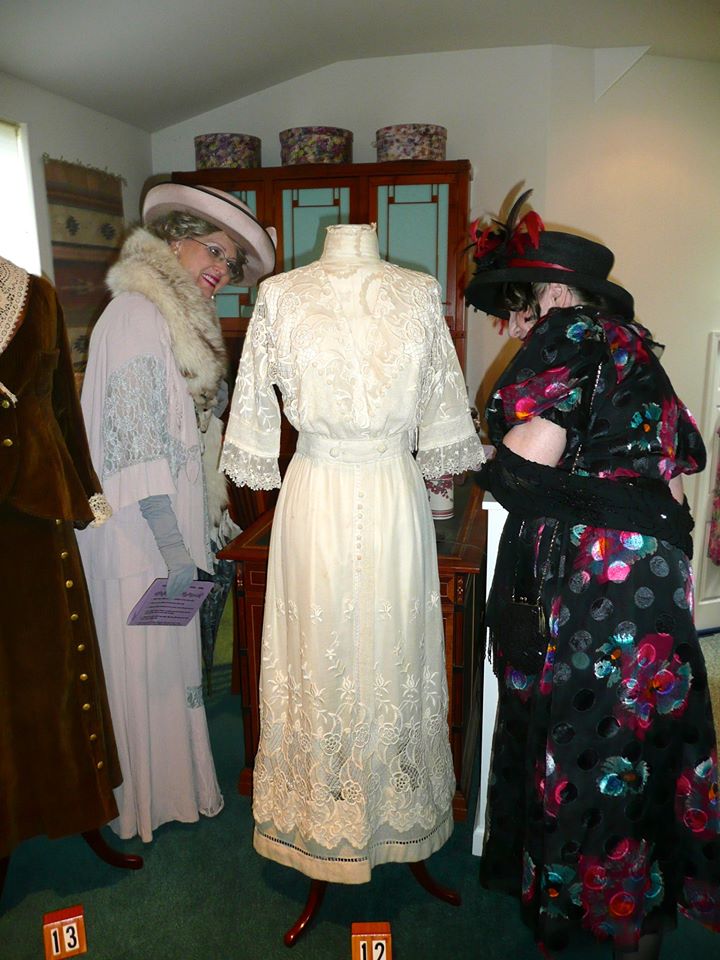
Guests are taking a peek at the back. |
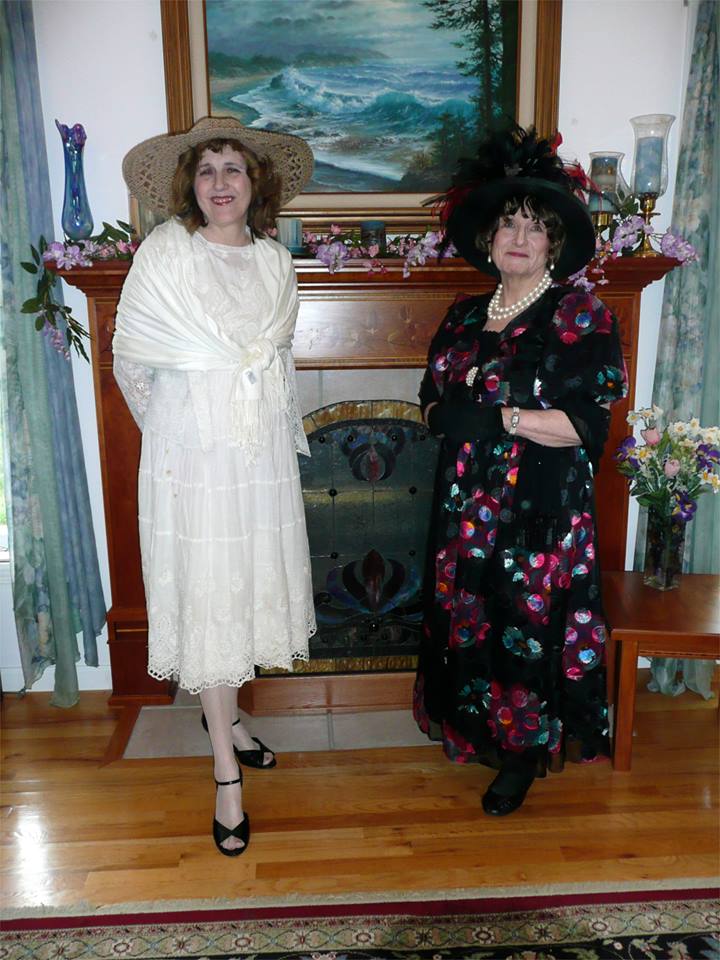
Guests enjoyed posing with Mr. Terry's mantle. |
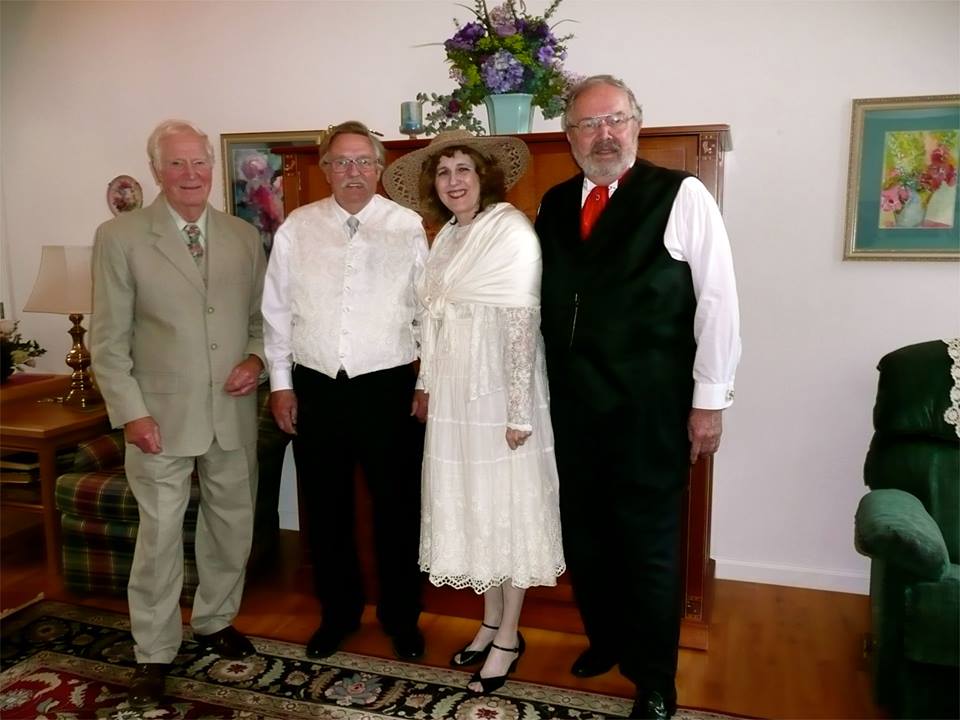
The artistry of Mr. Terry's woodwork commanded almost as (l-R) Mr. Terry, Mr. Paul, Miss Melody, Mr. Larry. |
|
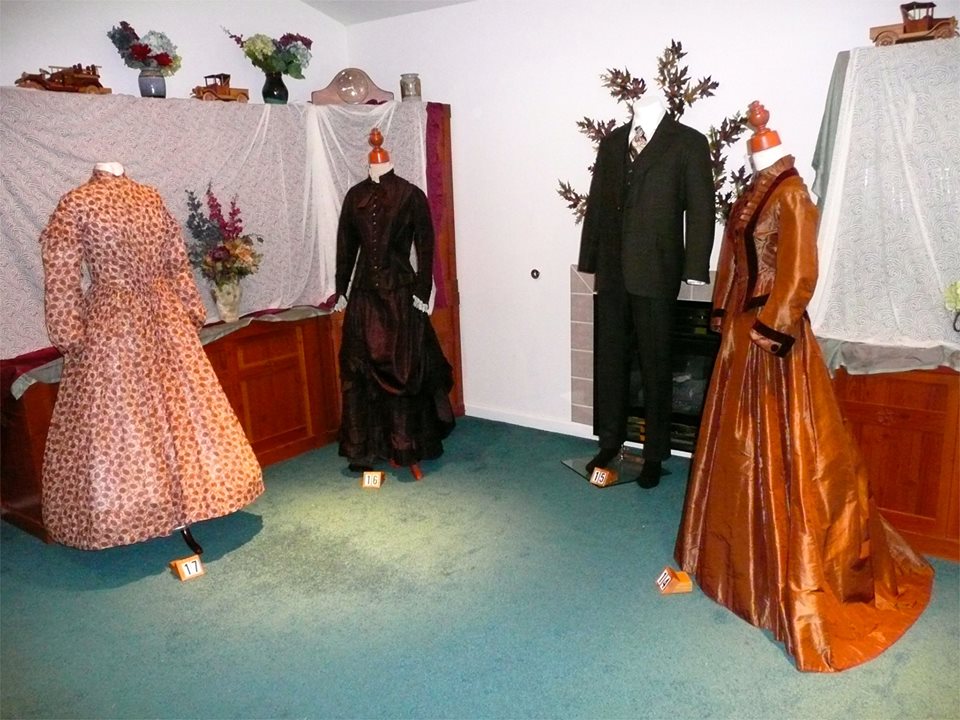
Part of the Autumn display. |
|
 |

An 1840's cotton day dress with a Typical design features of the era include |
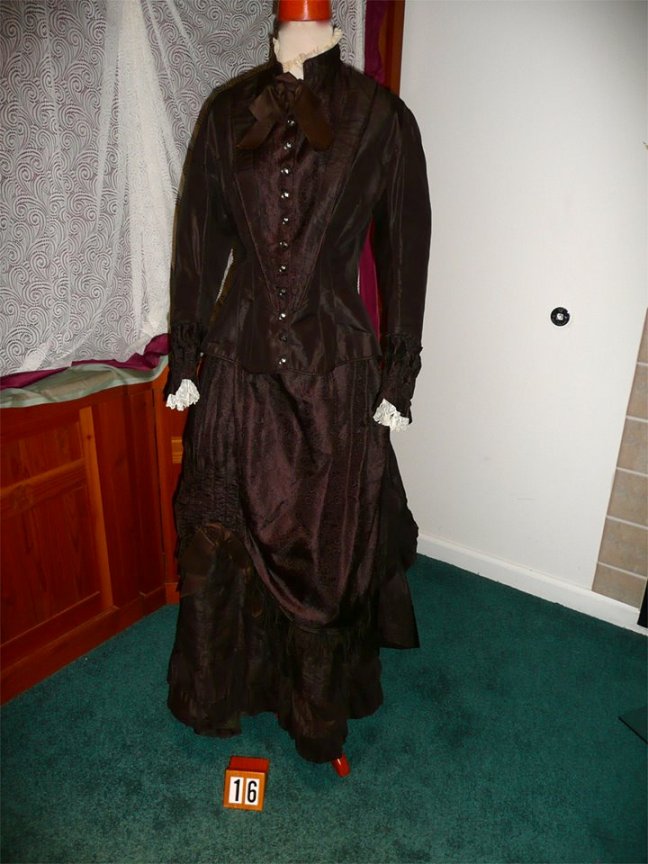
Circa 1879-81 two piece afternoon gown with |
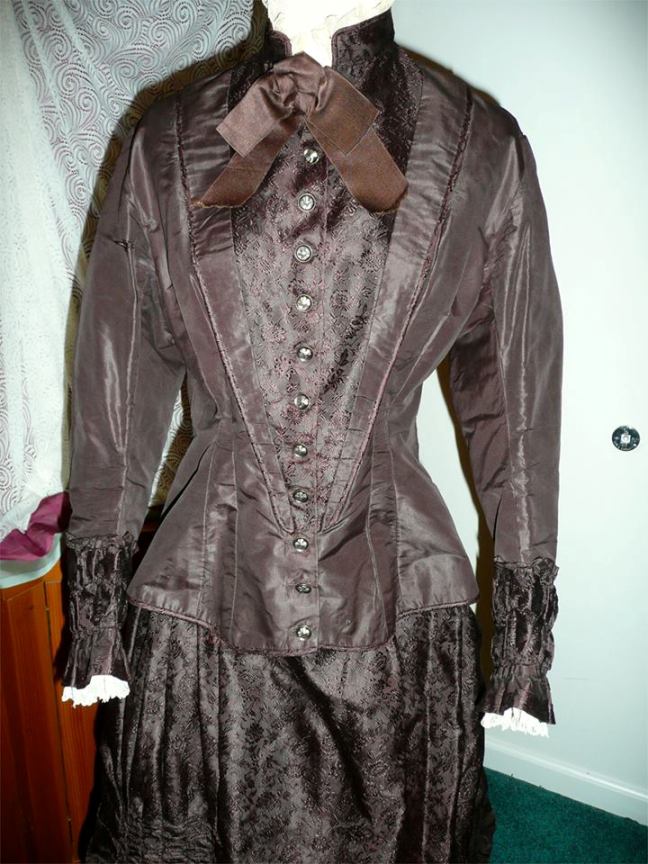
The gown in constructed of matching chocolate |
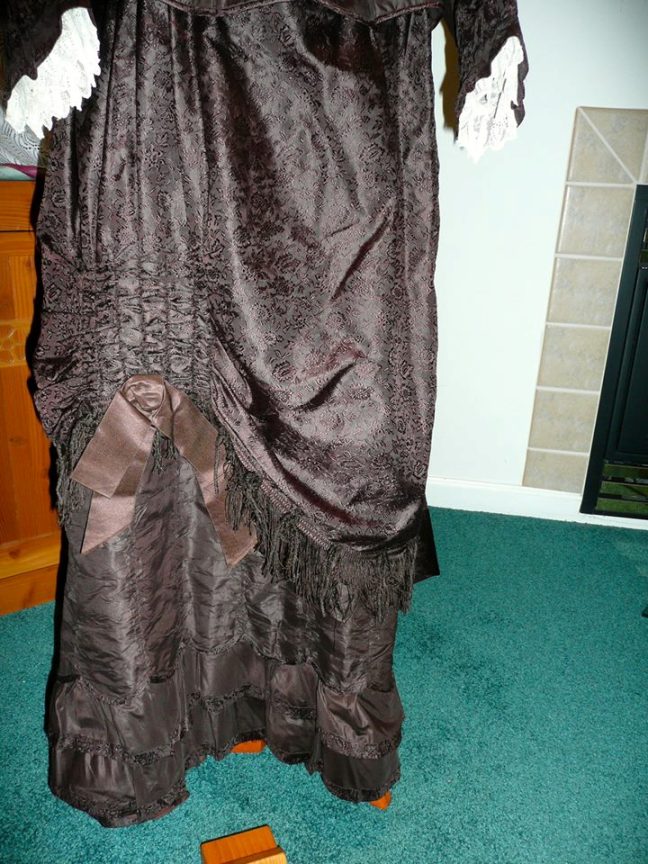 |
Typical of the period, the complex, layered skirt is ruched, draped, pleated and trimmed with fringe!
|
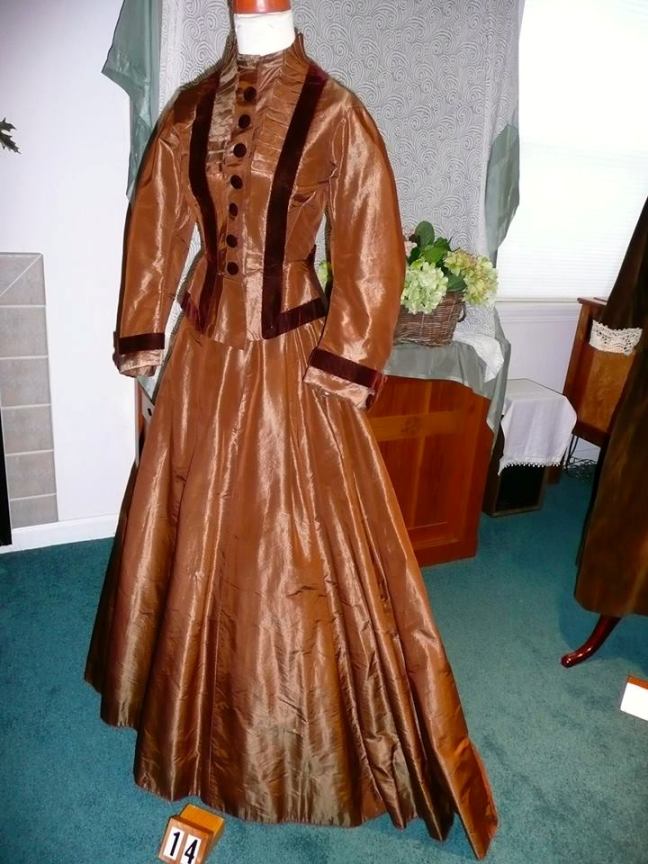 Circa 1890-01 copper color satin two piece afternoon gown has the newly popular five gored skirt. |
 The bodice is tightly fitted and the sleeves still narrow, not having evolved to the great puff associated with the mid-1890's. |
|
The gown is trimmed with velvet ribbon and buttons. |
|
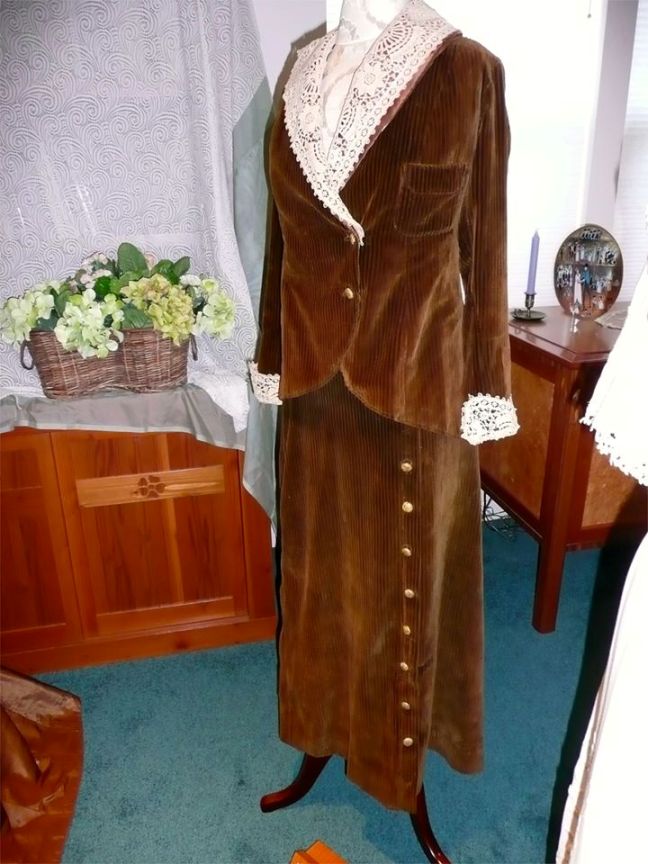 |
Circa 1911-13 brown cotton wide-wale corduroy two piece walking suit has a fitted, hip length jacket and slim skirt. The design achieves the |
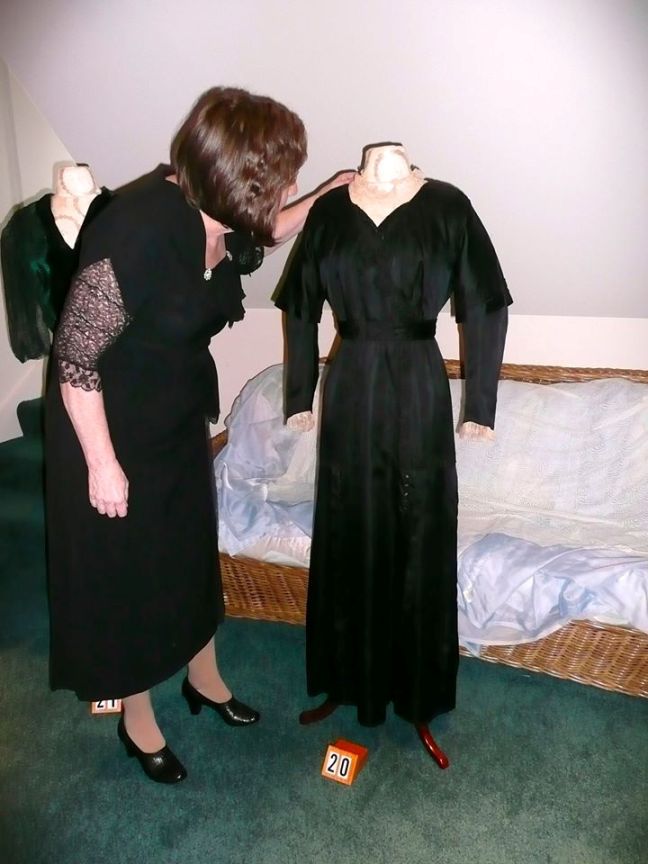 A guest who shared her vintage tea gown by wearing it, examines the fine details of the display gown. |
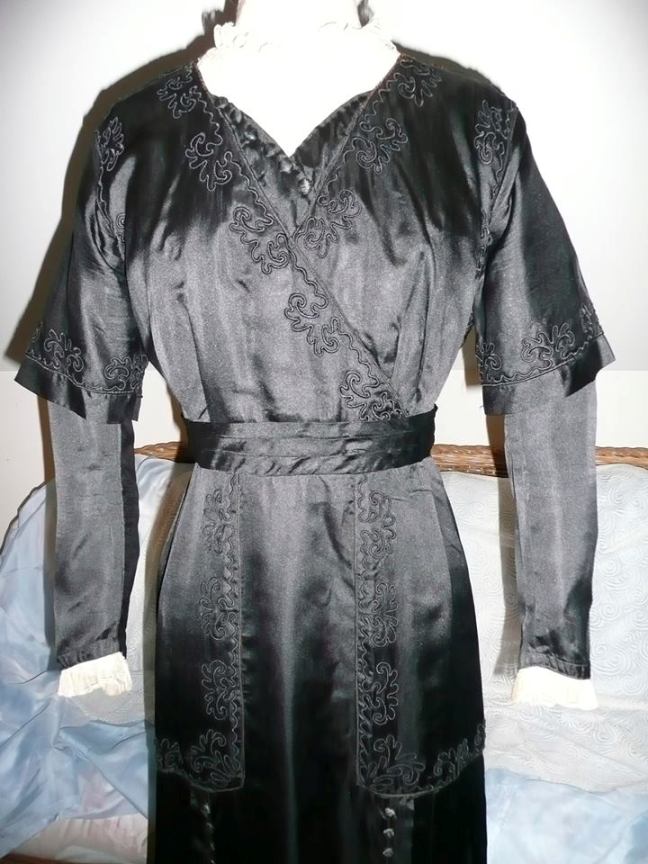 The gown features double sleeves, a double criss-cross bodice, cumberband, and hip panels. It's lavishly trimmed with narrow soutache braid and tiny crochet buttons. |
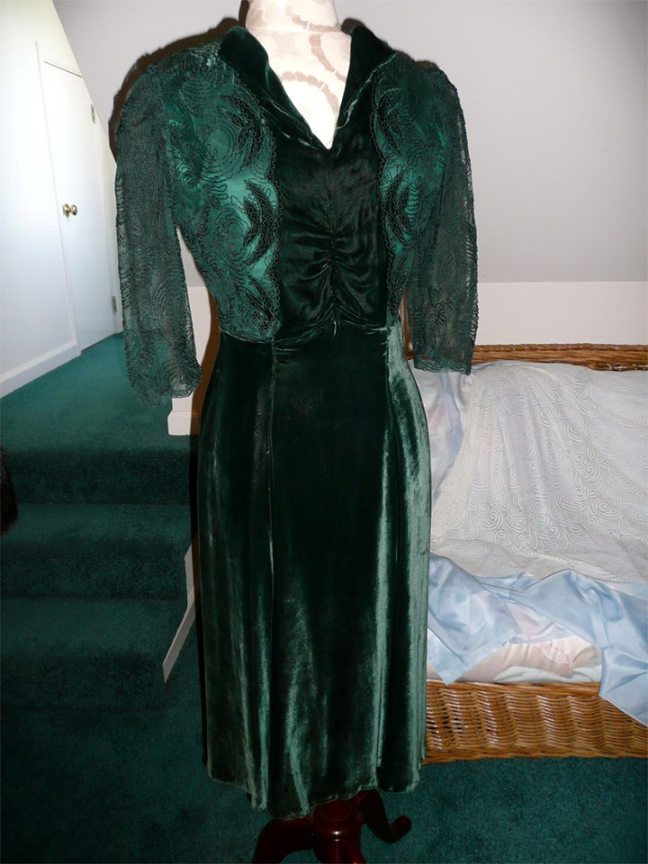 An early 1940's party dress of forest green silk velvet has a V neckline with small collar, center front gathered bodice and elbow length sleeves. |
 The net bodice sides and sleeves are lavishly trimmed with narrow soutache braid. |
|
If guests wanted to wear vintage clothing or costume, an ensemble representing a season was suggested. Miss Julies wore a pink, early 1940's spring or summer cocktail dress. |
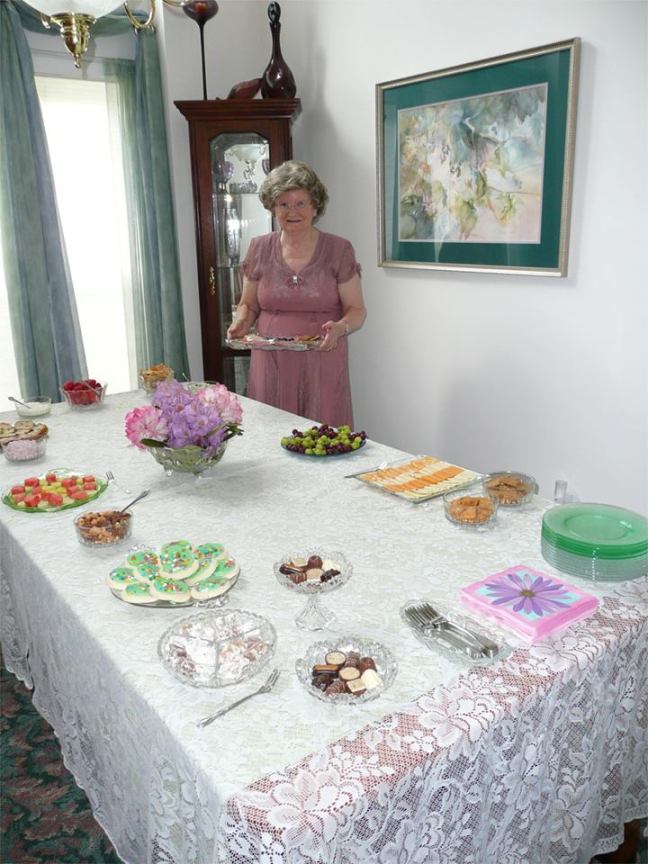 |
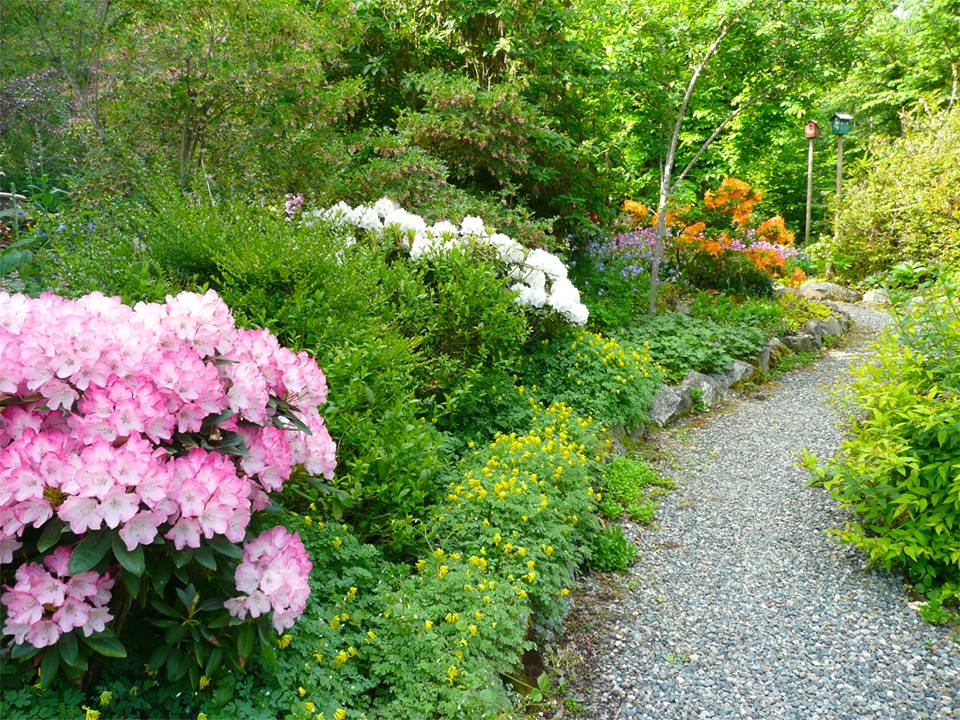
Miss Julie used the colors blooming in their Pacific Northwest
garden - |
|
| Thank you for visiting our website. We hope you enjoyed Miss Julie's photos and could feel the fun and excitement we experienced at this gathering. If you'd like to learn more about us or historical costuming in particular, please visit our Homepage. There, you will find additional images, details about upcoming events, our educational wing (SITU-University) which teaches historical costuming, dress-up opportunities, how to become a member if you so desire, etc. You may also write to: LadyVictoria "at" SITUSeattle.com We look forward to seeing you at an upcoming event soon! |
|
| Updated Dec 3, 2014 | |